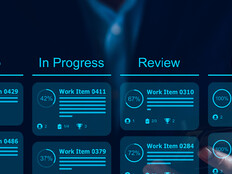Focus on the Needs of Citizens Seeking Services
As the Department of Housing and Urban Development builds its capability for designing customer experiences, it’s focusing on the experience of very low-income seniors. As we analyzed interviews with those seniors, HUD representatives and others, powerful insights emerged.
For example, seniors who become experts in navigating the complexities of HUD programs benefit the most from the system. But the distributed nature of HUD’s response creates a burden on employees who are not trained to handle them and who don’t have a systematic way to address endemic problems.
And intermediaries such as housing site managers, landlords and others on the front lines feel unprepared to deal with the physical and mental decline of senior residents.
For HUD, HCD is expanding the agency’s understanding of these human needs, which results in more successful solutions and more usable systems.
Another important group of customers for the federal government is its retirees. The Office of Personnel Management uses reliable but outdated software to determine the benefits of every federal employee when they retire. OPM wanted to do more than replace the current software; they wanted to develop new software with users at the center. Making up for the current software’s shortcomings forces OPM’s legal administrative specialists to squander time and focus.
VIDEO: Federal CIO Suzette Kent explains the government’s IT innovation agenda.
Honesty Is the Best Policy for Making Changes
Historically, OPM’s approach to software development centered on systems and system functionality, but agency staff asked CoE to instead find and manage a vendor who will take an HCD approach with new software to optimize the legal specialists’ expertise.
The CoE’s customer experience leads use HCD strategies and tactics to define and address our partner agencies’ problems.
It starts with an honest appraisal of how an agency defines and cares for its customers. It involves interviewing and observing customers and the staff charged with supporting them. And it can involve the analysis of an agency’s policies, culture, history and future planning.
It is all in the service of a simple concept: The best way to define and develop solutions is to put the people dependent on those solutions at the center of your process.











